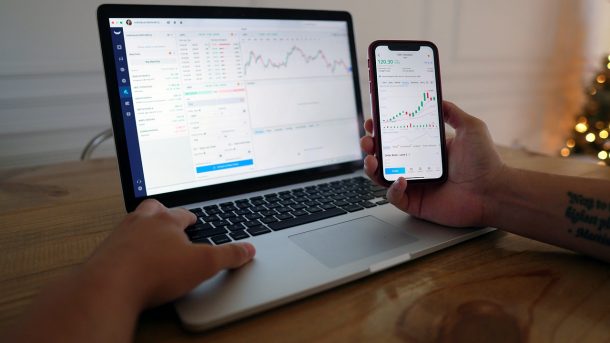The short answer to this is: yes, you can trade cryptocurrencies in forex.
Several forex brokers offer cryptocurrency trading pairs, including Bitcoin, Ethereum, Litecoin, and more. You can trade these currencies against each other or traditional fiat currencies like the US dollar. Cryptocurrency trading is generally done on margin, meaning you can trade with leverage.
The forex market is the world’s largest and most liquid marketplace. Bitcoin and other cryptocurrencies have given currency trading an exciting new dimension. Many forex brokers have started to accept bitcoins for currency trading.
Forex trading using Bitcoin
Consider a bitcoin-based forex trade, for example. First, you create a forex trading account with a broker that accepts bitcoins. You then send two bitcoins to the broker’s digital wallet from your digital wallet.
Assume you want to trade $15,000 worth of bitcoins for £7,500 in British pounds at a bitcoin to pound rate of 1 bitcoin = $7,500. Your deposit of 2 bitcoins is worth $15,000. If the exchange rate is GBP0.5 = $1, you will get £7,500 when your position matures.
The GBP/USD rate subsequently drops to 0.45 before resuming its upward trend, and you square off your position to receive $1,666.65 in your trading account after some time has passed. You’ve made a tidy profit of 11.11% and are ready to cash out.
Benefits of forex trading using Bitcoin
Decentralised valuation: One of the most significant benefits of trading bitcoin is that the market isn’t connected to a central bank, nor is it owned or controlled by a single entity. Digital currencies are independent of central geopolitical control and macroeconomic issues like country-specific inflation or interest rates.
The cost of trading is low: To attract new clients, most forex brokers that accept bitcoin keep trading fees very low.
No limitations: There are no worldwide limitations with bitcoin transactions. A trader based in South Africa may trade forex through a UK-based broker. Regulatory issues may still exist, but there are no national boundaries if traders and brokers are prepared to exchange.
Low deposit amount: The minimum deposit amount is usually set at $25, although some bitcoin forex trading firms allow traders to begin with less than that. Some forex trading firms have offered bonuses, including a matching deposit amount. Traders should be sure that the broker is authorised and well-regulated.
Security: You don’t have to reveal your bank account or credit card information when using bitcoin. This is a significant benefit in terms of cost and financial security.
Risks of forex trading using Bitcoin
Varying exchange rates: Bitcoin has a complicated and volatile history, which means its price varies frequently.
Different bitcoin exchange rates: There are numerous bitcoin exchanges, each with its exchange rate. Traders must know which bitcoin exchange rates the forex broker will be utilising.
The importance of a verified trader’s status: Using leverage is dangerous for inexperienced traders who may not know the risk. This risk isn’t just limited to cryptocurrency forex trading, and it also applies to traditional forex trades.
US dollar to bitcoin rate risk: Almost every broker sells the bitcoins received from customers as soon as possible and keeps the money in dollars. Even if a trader does not take a forex trade position right away after receiving bitcoin deposits, they are still exposed to the bitcoin-to-dollar rate risk between deposit and withdrawal.
Bitcoin security risks: Even if you keep your bitcoin in a digital wallet, they are still vulnerable to hacking and theft. Look for a broker that offers insurance protection against theft to minimise this danger.
The final word
Although it is possible to trade cryptocurrencies like bitcoin with forex, there are still numerous hazards. Trading in a decentralised currency with no costs of globalisation is an advantage in forex trading. However, the trade-off is simply adding a third currency to a trading pair that was previously unregulated. Only use a locally regulated forex brokerage if you want to take on that danger.









